Adding a trellis to your garden can instantly transform a bare wall or fence into a lush, vertical oasis. Trellises provide the perfect support for a variety of climbing plants, allowing you to maximize your available space and create stunning visual interest. In this blog post, we’ll explore three exceptional trellis-climbing plants that will elevate your outdoor living space.
Passion Flower (Passiflora)

Passion flowers are truly captivating plants, with their intricate, otherworldly blooms and lush, trailing vines. These tropical beauties are perfect for adding a touch of the exotic to your trellis. Passiflora species come in a wide range of colors, from the vibrant purple and white of the common Passiflora incarnata to the delicate pink and lavender hues of Passiflora ‘Lavender Lady’.
Passion flowers are fast-growing and can quickly cover a trellis, creating a stunning focal point in your garden. They thrive in full sun and well-drained soil, and their tendrils will readily cling to the trellis structure, requiring minimal maintenance. Be sure to provide ample support, as the vines can become quite heavy as they mature. With their captivating blooms and lush foliage, passion flowers are a true showstopper on any trellis.
Climbing Roses (Rosa ‘American Beauty’)

No trellis would be complete without the graceful presence of climbing roses. These vigorous vines can transform a plain structure into a romantic, fragrant oasis. One particularly stunning variety is the ‘American Beauty’ rose, with its large, deep pink blooms and glossy, dark green foliage.
‘American Beauty’ is a classic climbing rose that can reach heights of up to 20 feet, making it an ideal choice for trellises and arbors. Its sturdy canes will readily attach to the trellis, and with proper pruning and training, you can create a stunning, cascading display of flowers. These roses thrive in full sun and well-drained soil, and their intoxicating fragrance will fill the air around your trellis.
Clematis (Clematis armandii)
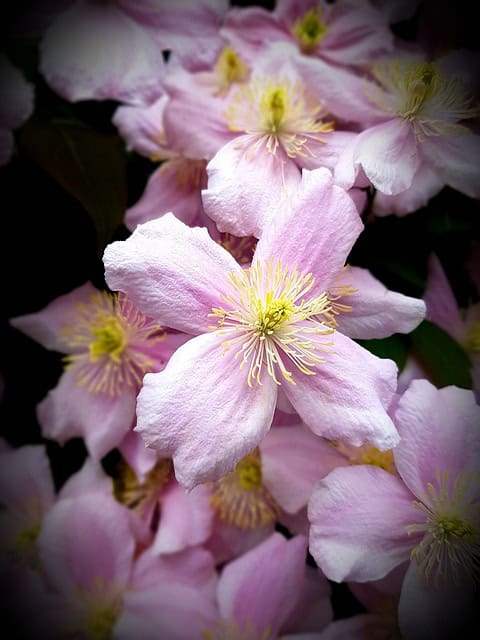
For a touch of elegance and sophistication, consider adding the Armand clematis (Clematis armandii) to your trellis. This evergreen vine is known for its stunning, early-spring blooms and its ability to cling to a variety of support structures.
Clematis armandii, also known as the Evergreen Clematis, produces an abundance of fragrant, white flowers that can cover the entire plant. Its glossy, dark green foliage provides a beautiful backdrop for the blooms, and the vine’s twining tendrils will easily wrap around your trellis, creating a lush, vertical display.
This clematis variety thrives in full sun to partial shade and well-drained soil. It’s a relatively fast-growing plant, making it an excellent choice for quickly covering a trellis. With its elegant appearance and reliable performance, the Armand clematis is a true standout among trellis-climbing plants.
Arctic Kiwi (Actinidia arguta)
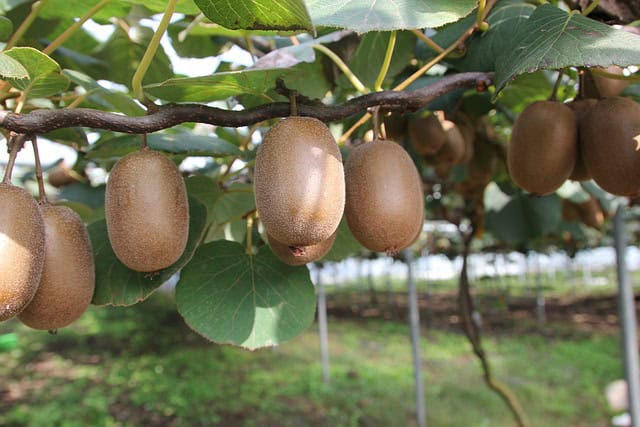
While the familiar kiwi fruit may not be the first plant that comes to mind for a trellis, the Arctic kiwi (Actinidia arguta) is a hidden gem that deserves a closer look. This hardy, deciduous vine is native to northeastern Asia and can thrive in cooler climates, making it an excellent choice for gardeners in temperate regions.
The Arctic kiwi produces an abundance of small, sweet fruits that resemble their larger, fuzzy cousins, but with a smooth, edible skin. The vines themselves are equally impressive, with their lush, heart-shaped leaves and delicate, fragrant flowers that bloom in the spring. As the plant matures, its twining tendrils will readily cling to a trellis, creating a stunning, vertical display.
Arctic kiwis prefer full sun and well-drained soil, and they can reach heights of up to 30 feet, making them a versatile choice for covering large trellises or arbors. With their unique fruits and attractive foliage, these vines will add a touch of the unexpected to your garden.
Black-Eyed Susan Vine (Thunbergia alta)
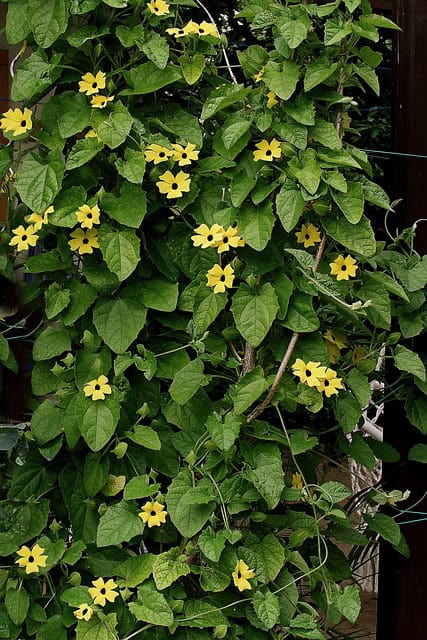
For a burst of vibrant color and a cascading, trailing habit, the Black-Eyed Susan vine (Thunbergia alta) is an excellent trellis-climbing plant. This annual vine is native to tropical Africa and is known for its striking, daisy-like flowers with dark centers.
The Black-Eyed Susan vine’s long, slender stems will readily cling to a trellis, creating a lush, flowing display of blooms. The flowers come in a range of warm hues, including yellow, orange, and white, making them a versatile choice for complementing a variety of garden color schemes.
These vines thrive in full sun and well-drained soil, and they are relatively fast-growing, quickly covering a trellis with their vibrant foliage and flowers. The Black-Eyed Susan vine is also a prolific bloomer, producing flowers throughout the growing season, ensuring a continuous display of color on your trellis.
Wisteria (Wisteria macrostachya)
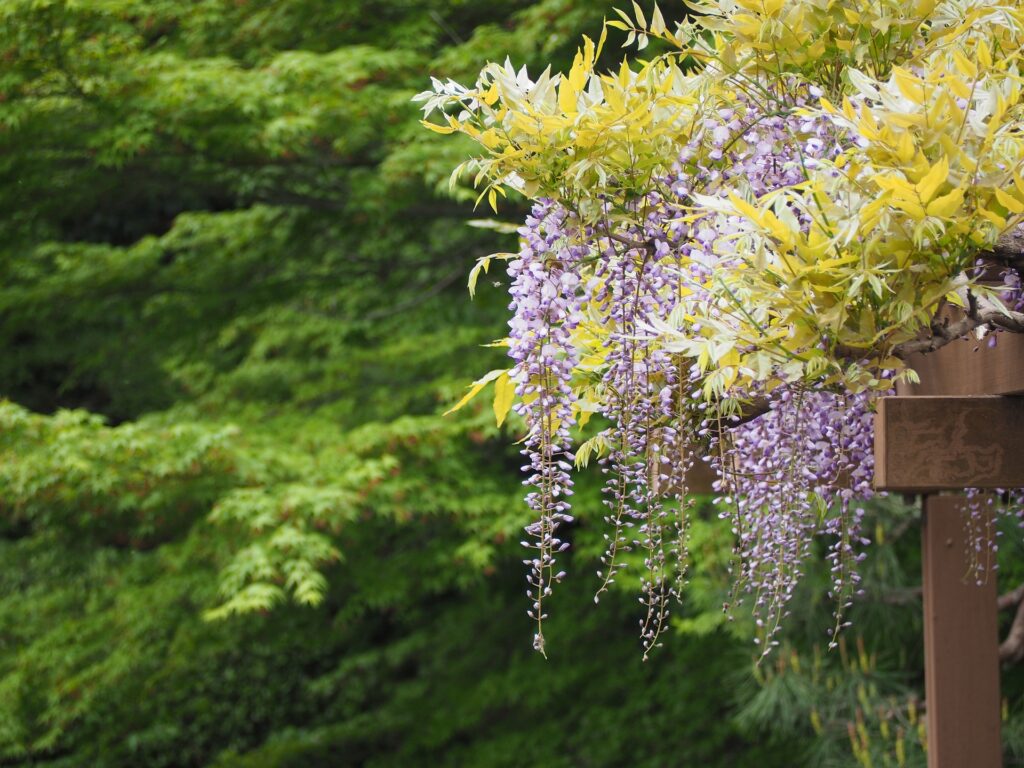
No discussion of trellis-climbing plants would be complete without the majestic wisteria. While there are several species to choose from, the American wisteria (Wisteria macrostachya) is a standout for its stunning, cascading blooms and its adaptability to a range of growing conditions.
The American wisteria is a deciduous, woody vine that can reach impressive heights, making it an ideal choice for covering large trellises or arbors. Its long, pendulous flower clusters, known as racemes, can grow up to 12 inches in length and come in shades of lavender, purple, and white, creating a truly breathtaking display.
Wisteria macrostachya is a relatively fast-growing plant that requires full sun and well-drained soil to thrive. While it may take a few years to establish, once the plant matures, it will reward you with an abundance of fragrant blooms that will transform your trellis into a stunning, floral centerpiece.
Bougainvillea (Bougainvillea)
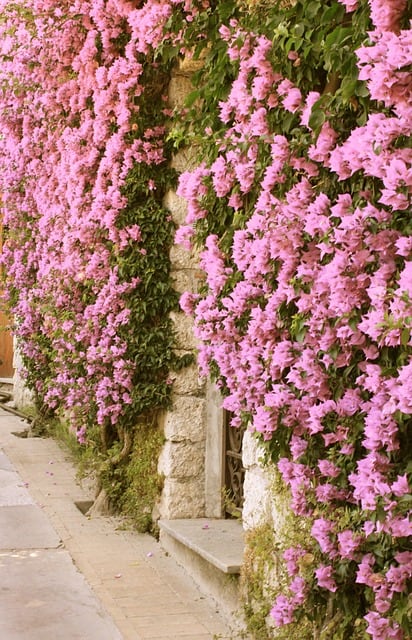
For a burst of vibrant, tropical color, the bougainvillea is a standout choice for trellis-climbing plants. These woody vines are native to South America and are known for their showy, papery bracts that come in a range of vivid hues, including red, pink, purple, and orange.
Bougainvilleas are fast-growing and can quickly cover a trellis, creating a stunning, cascading display of color. Their thorny stems will readily cling to the trellis structure, requiring minimal maintenance. These plants thrive in full sun and well-drained soil, and they are relatively drought-tolerant, making them an excellent choice for gardeners in warmer, drier climates.
When in bloom, bougainvilleas are a true showstopper, adding a touch of the exotic to any outdoor living space. Their vibrant hues and trailing habit make them a perfect choice for trellises, arbors, and pergolas, where their stunning flowers can be fully appreciated.
Chocolate Vine (Akebia quinata)
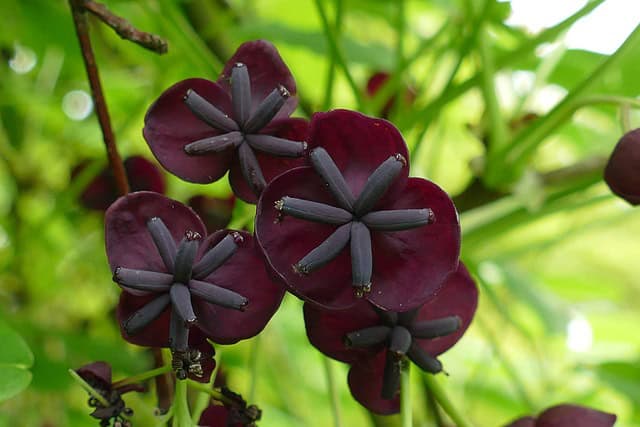
For a unique and intriguing trellis-climbing plant, consider the chocolate vine (Akebia quinata). This deciduous, woody vine is native to Asia and is known for its distinctive, purple-tinged flowers and its edible, sausage-shaped fruits.
The chocolate vine’s delicate, fragrant blooms appear in early spring, creating a stunning contrast against the plant’s lush, green foliage. As the flowers mature, they give way to the plant’s unique, edible fruits, which have a flavor reminiscent of chocolate or vanilla.
Akebia quinata is a relatively fast-growing plant that can reach heights of up to 30 feet, making it an excellent choice for covering large trellises or arbors. Its twining stems will readily cling to the trellis structure, requiring minimal support. The chocolate vine thrives in full sun to partial shade and well-drained soil, and it is relatively cold-hardy, making it a versatile option for gardeners in a range of climates.
Climbing Hydrangea (Hydrangea petiolaris)

For a touch of elegant, old-world charm, the climbing hydrangea (Hydrangea petiolaris) is a must-have trellis-climbing plant. This deciduous, woody vine is native to Asia and is known for its large, lace-cap-style flowers and its attractive, peeling bark.
The climbing hydrangea’s delicate, white blooms appear in late spring and early summer, creating a stunning contrast against the plant’s dark green foliage. As the flowers mature, they develop a beautiful, lace-like appearance that is both delicate and eye-catching.
This vine is a relatively slow-grower, but it is well worth the wait. Once established, the climbing hydrangea can reach heights of up to 50 feet, making it an excellent choice for covering large trellises or walls. Its clinging aerial roots will readily attach to the trellis structure, providing a secure and long-lasting display.
Hydrangea petiolaris thrives in partial shade and well-drained, acidic soil, and it is relatively cold-hardy, making it a versatile option for gardeners in a range of climates. With its elegant, old-world charm and its ability to transform a trellis into a stunning, vertical garden, the climbing hydrangea is a true standout among trellis-climbing plants.
Grapes (Vitis labrusca)
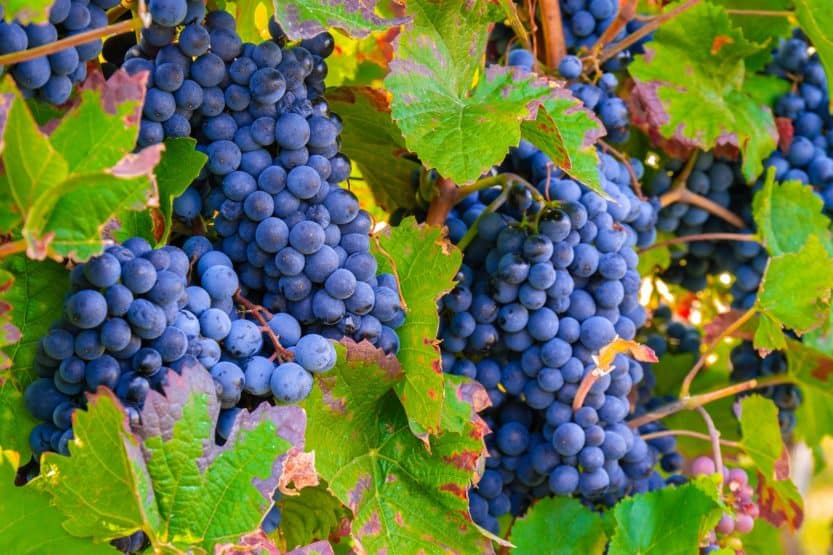
While grapes may not be the first plant that comes to mind for a trellis, they can actually make an excellent choice, providing both visual interest and a practical, edible harvest. The Concord grape (Vitis labrusca) is a particularly well-suited variety for trellis-climbing, with its vigorous, twining vines and its iconic, deep purple fruit.
Concord grapes are a deciduous, woody vine that can quickly cover a trellis, creating a lush, green canopy. Their large, lobed leaves provide ample shade, while their clusters of sweet, juicy grapes offer a delicious reward for the gardener. These grapes thrive in full sun and well-drained soil, and they are relatively cold-hardy, making them a versatile option for a range of climates.
By incorporating a grape vine into your trellis design, you’ll not only add visual interest to your outdoor space but also have the opportunity to harvest your own homegrown fruit. With proper pruning and training, you can shape the vines to create a stunning, vertical display that is both beautiful and productive.
Cup and Saucer Vine (Cobaea scandens)

For a touch of whimsy and enchantment, the cup and saucer vine (Cobaea scandens) is a delightful trellis-climbing plant. This annual, twining vine is native to Mexico and is known for its unique, bell-shaped flowers that resemble a cup and saucer.
The cup and saucer vine’s blooms come in a range of colors, including purple, white, and pink, and they appear in abundance throughout the growing season. As the flowers mature, they develop a delicate, papery texture that adds to their charm. The plant’s lush, green foliage provides a beautiful backdrop for the stunning blooms, creating a truly captivating display.
Cobaea scandens is a relatively fast-growing vine that can quickly cover a trellis, reaching heights of up to 20 feet. Its twining stems will readily cling to the trellis structure, requiring minimal support. These vines thrive in full sun and well-drained soil, and they are relatively easy to grow, making them an excellent choice for gardeners of all skill levels.
Cypress Vine (Ipomoea quamoclit)
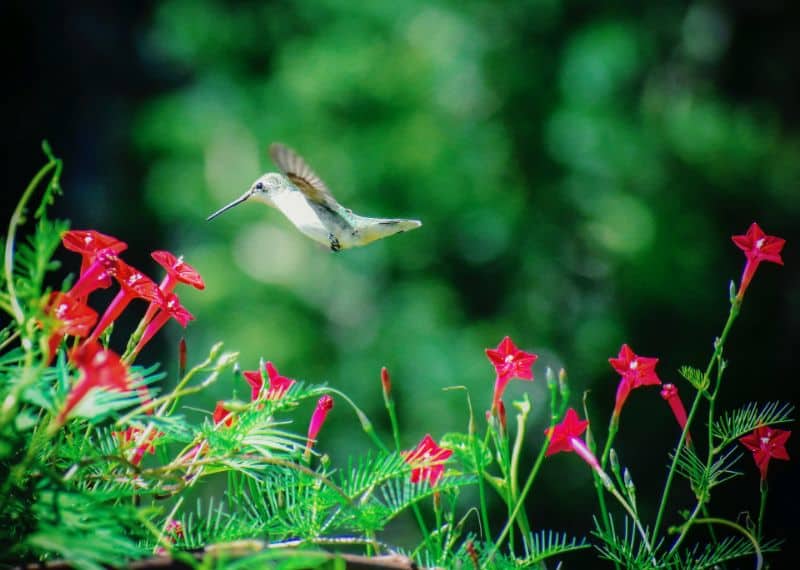
For a delicate and airy trellis-climbing plant, the cypress vine (Ipomoea quamoclit) is a true standout. This annual, twining vine is native to tropical regions and is known for its finely-cut, feathery foliage and its delicate, star-shaped flowers.
The cypress vine’s blooms come in a range of vibrant colors, including red, pink, and white, and they appear in abundance throughout the growing season. The plant’s lush, green foliage provides a beautiful contrast to the delicate flowers, creating a stunning, vertical display.
Ipomoea quamoclit is a relatively fast-growing vine that can quickly cover a trellis, reaching heights of up to 20 feet. Its twining stems will readily cling to the trellis structure, requiring minimal support. These vines thrive in full sun and well-drained soil, and they are relatively easy to grow, making them an excellent choice for gardeners of all skill levels.
Madagascar Jasmine (Stephanotis floribunda)
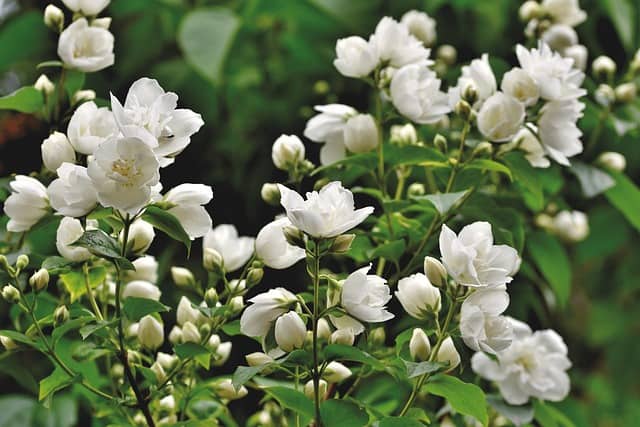
For a truly elegant and captivating trellis-climbing plant, the Madagascar jasmine (Stephanotis floribunda) is a standout choice. This evergreen, woody vine is native to Madagascar and is known for its exquisite, waxy white flowers and its intoxicating fragrance.
The Madagascar jasmine’s blooms appear in clusters, creating a stunning, cascading display that will transform any trellis into a focal point. The flowers themselves are shaped like small, trumpet-like bells, and they emit a sweet, jasmine-like scent that will fill the air around your outdoor living space.
Stephanotis floribunda is a relatively slow-growing plant, but its patience is well worth it. Once established, the vine can reach heights of up to 20 feet, providing ample coverage for a trellis or arbor. These plants thrive in partial shade and well-drained, slightly acidic soil, and they are relatively cold-hardy, making them a versatile option for gardeners in a range of climates.
Mandevilla

For a touch of tropical flair, the mandevilla is a captivating trellis-climbing plant that will add a bold and vibrant element to your outdoor space. These woody, twining vines are native to South America and are known for their large, showy flowers that come in a range of vivid hues, including red, pink, and white.
Mandevillas are relatively fast-growing, and their twining stems will readily cling to a trellis, creating a stunning, vertical display. The plant’s lush, green foliage provides a beautiful backdrop for the stunning blooms, which appear in abundance throughout the growing season.
These tropical beauties thrive in full sun and well-drained soil, and they are relatively heat-tolerant, making them an excellent choice for gardeners in warmer climates. While they may not be as cold-hardy as some other trellis-climbing plants, with proper winter protection, mandevillas can be grown in a range of USDA hardiness zones.
Star Jasmine (Trachelospermum jasminoides)

For a touch of classic charm and a captivating fragrance, the star jasmine (Trachelospermum jasminoides) is a must-have trellis-climbing plant. This evergreen, woody vine is native to Asia and is known for its delicate, star-shaped flowers and its intoxicating, jasmine-like scent.
The star jasmine’s blooms appear in clusters, creating a stunning, cascading display that will transform any trellis into a focal point. The flowers themselves are small and delicate, but their collective impact is truly breathtaking. As the plant matures, its twining stems will readily cling to the trellis structure, creating a lush, vertical garden.
Trachelospermum jasminoides is a relatively slow-growing plant, but its patience is well worth it. Once established, the vine can reach heights of up to 20 feet, providing ample coverage for a trellis or arbor. These plants thrive in partial shade and well-drained soil, and they are relatively cold-hardy, making them a versatile option for gardeners in a range of climates.
Sweet Pea (Lathyrus odoratus)
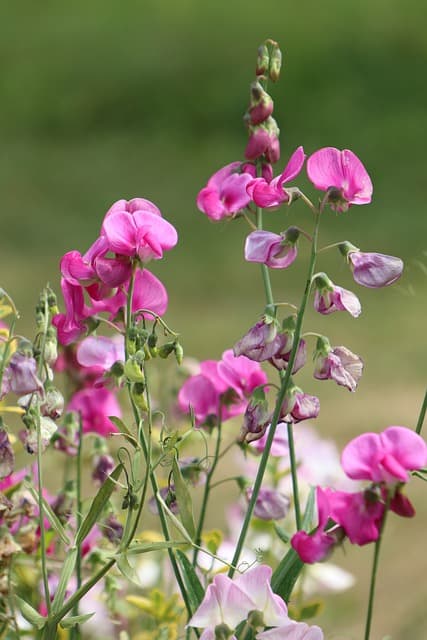
For a captivating display of fragrance and color, the sweet pea (Lathyrus odoratus) is a must-have trellis-climbing plant. These annual, twining vines are native to the Mediterranean region and are known for their delicate, pea-like flowers and their intoxicating, sweet scent.
Sweet peas come in a wide range of vibrant hues, including pink, purple, red, and white, and they appear in abundance throughout the growing season. Their twining stems will readily cling to a trellis, creating a stunning, vertical display that will fill the air with their heavenly fragrance.
Lathyrus odoratus is a relatively fast-growing plant, and it can quickly cover a trellis, reaching heights of up to 6 feet. These vines thrive in full sun and well-drained soil, and they are relatively easy to grow, making them an excellent choice for gardeners of all skill levels.
Trumpet Vine (Campsis radicans)
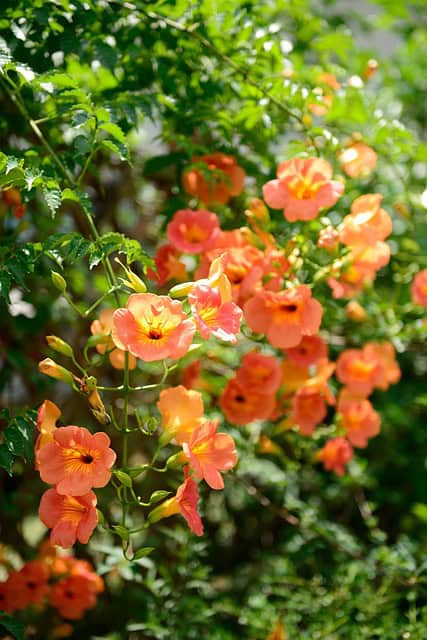
For a touch of dramatic flair, the trumpet vine (Campsis radicans) is a captivating trellis-climbing plant that will add a bold and eye-catching element to your outdoor space. This deciduous, woody vine is native to North America and is known for its large, trumpet-shaped flowers and its vigorous, twining growth habit.
The trumpet vine’s blooms come in a range of vibrant hues, including orange, red, and yellow, and they appear in abundance throughout the summer months. The plant’s lush, green foliage provides a beautiful backdrop for the stunning flowers, creating a truly captivating display.
Campsis radicans is a relatively fast-growing plant, and its twining stems will readily cling to a trellis, creating a stunning, vertical garden. These vines thrive in full sun and well-drained soil, and they are relatively cold-hardy, making them a versatile option for gardeners in a range of climates.
Yellow Jasmine (Chrysojasminum humile)
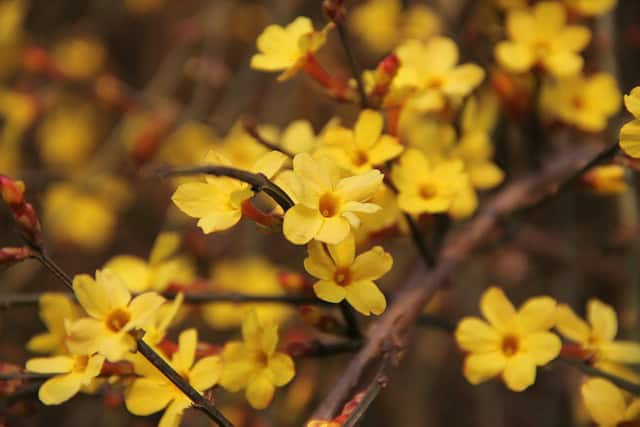
For a touch of classic charm and a captivating fragrance, the yellow jasmine (Chrysojasminum humile) is a must-have trellis-climbing plant. This evergreen, woody vine is native to Asia and is known for its delicate, golden-yellow flowers and its intoxicating, jasmine-like scent.
The yellow jasmine’s blooms appear in clusters, creating a stunning, cascading display that will transform any trellis into a focal point. The flowers themselves are small and delicate, but their collective impact is truly breathtaking. As the plant matures, its twining stems will readily cling to the trellis structure, creating a lush, vertical garden.
Chrysojasminum humile is a relatively slow-growing plant, but its patience is well worth it. Once established, the vine can reach heights of up to 20 feet, providing ample coverage for a trellis or arbor. These plants thrive in partial shade and well-drained soil, and they are relatively cold-hardy, making them a versatile option for gardeners in a range of climates.
Honeysuckle
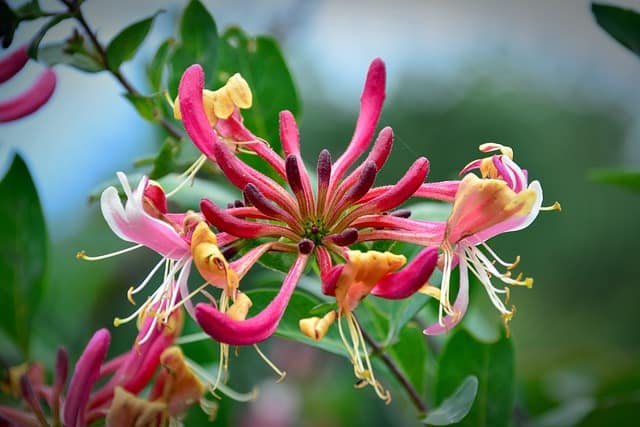
For a classic and captivating trellis-climbing plant, the honeysuckle is a must-have choice. These woody, twining vines are native to temperate regions around the world and are known for their fragrant, tubular flowers and their lush, green foliage.
Honeysuckle comes in a range of varieties, each with its own unique charm. The common honeysuckle (Lonicera japonica) is a popular choice, with its delicate, white and yellow blooms that emit a sweet, intoxicating scent. The trumpet honeysuckle (Lonicera sempervirens), on the other hand, boasts vibrant, red and orange flowers that are sure to catch the eye.
Regardless of the variety, honeysuckle vines are relatively fast-growing and will readily cling to a trellis, creating a stunning, vertical display. These plants thrive in full sun to partial shade and well-drained soil, and they are relatively cold-hardy, making them a versatile option for gardeners in a range of climates.
Ivy
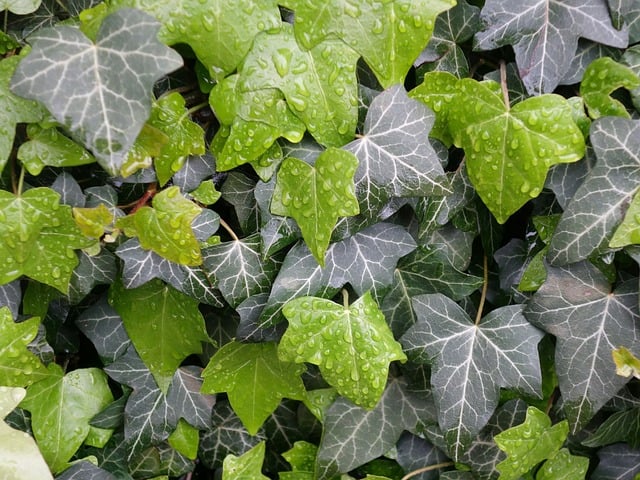
For a versatile and low-maintenance trellis-climbing plant, ivy is a true standout. These hardy, evergreen vines are native to many parts of the world and are known for their ability to cling to a variety of surfaces, including trellises, walls, and fences.
Ivy comes in a wide range of varieties, each with its own unique leaf shape, color, and growth habit. The English ivy (Hedera helix) is a classic choice, with its dark green, lobed leaves and its ability to quickly cover a trellis. The variegated ivy (Hedera helix ‘Variegata’), on the other hand, boasts a stunning mix of green, white, and yellow foliage that adds a touch of visual interest to any outdoor space.
Regardless of the variety, ivy is a relatively low-maintenance plant that requires minimal care. These vines thrive in a range of light conditions, from full sun to deep shade, and they are relatively cold-hardy, making them a versatile option for gardeners in a range of climates.
Morning Glory

For a touch of whimsy and enchantment, the morning glory is a delightful trellis-climbing plant. These annual, twining vines are native to tropical and subtropical regions and are known for their vibrant, trumpet-shaped flowers that bloom in the early morning hours.
Morning glories come in a wide range of colors, including blue, purple, pink, and white, and they appear in abundance throughout the growing season. Their twining stems will readily cling to a trellis, creating a stunning, vertical display that is sure to capture the attention of all who see it.
Ipomoea purpurea, the common morning glory, is a particularly well-suited variety for trellis-climbing. These vines are relatively fast-growing and can quickly cover a trellis, reaching heights of up to 15 feet. They thrive in full sun and well-drained soil, and they are relatively easy to grow, making them an excellent choice for gardeners of all skill levels.





